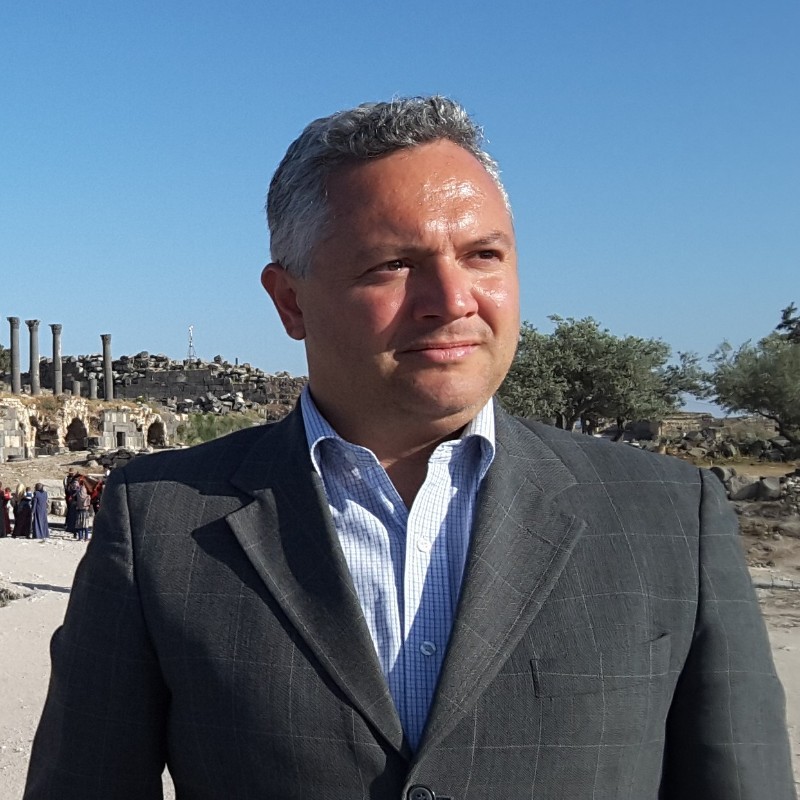The article reviews the conservation of the unique Reinforced Concrete Water Tower at the Public Abattoir in Marsa, Malta. The restoration was based on research and development of innovative high-performance materials together with their application, new advanced techniques in restoration of reinforced concrete and the development of a smart sensor network system for the durability and structural health monitoring of the structure. The two-part article, reviews the challenges encountered in the recovery of this unique industrial heritage monument and the complexity of the restoration process. The project led to a wider appreciation of industrial heritage in the Maltese Islands and set the bar for future interventions.
The reinforced concrete water tower was constructed in the 1930s to serve the needs of the Public Abattoir. It is the only structure of its type and size in the Maltese Islands and is considered as an important Industrial Heritage monument. The Water Tower consists of a reinforced concrete structure c.15 m high with a c. 10m diameter tank having a capacity of 400 cubic m. The tank consists of a shell structure with a cylindrical drum resting on a truncated conical structure with a dome at the base and ring beams, supported on 12 slender reinforced concrete columns. The structure had been considered for demolition in 2010 as a result of severe degradation and significant loss of section particularly of the shell structure of the tank. The case for the conservation of the unique water tower was made by the University of Malta, leading to a strategic conservation programme. The project required the development of new methodologies in the emerging field of reinforced concrete conservation, which had to be designed for the complex structure whilst effectively addressing the severe degradation.
The complexity of the conservation project and innovative solutions which had to be developed, required a comprehensive Management Framework, which could ensure the recovery of the industrial heritage monument.
The intervention was conducted on the basis of scientific restoration methodology and included key strategic steps: archival research and documentation, the appraisal of the industrial heritage structural through mapping of deterioration, research campaigns in the assessment of the materials and the structure including, materials non-destructive assessment, materials testing, structural microtremor analysis and numerical structural modelling and scenario testing to optimise repair and strengthening interventions.
The methodologies for restoration were planned depending on specific needs of the structure. New complex techniques for restoration were developed and applied in the restroation project including electro-chemical chloride extraction, re-alkalisation of reinforced concrete, epoxy injection and polymer concrete patch repair and the use of corrosion inhibitors, re-integration of the structure and improvement of bond between materials, using specialist techniques.

The recovery of the structure could only be made possible through specific solutions which had to be developed by the University of Malta, including new advanced materials. Ultra-high performance concrete (UHPC) with increased ductility, self-healing and self-compacting properties, based on nano-additives was developed and tested at the University of Malta. UHPC was then applied and tested on replica columns and eventually applied for the construction of jackets to the columns. Carbon-textile composite reinforced high-performance concrete was similarly developed and tested for the effective strengthening of the tank. The research conducted included the development and assessment of the mechanical and durability properties of the new materials, their performance with respect to the applications for which these were designed and the assessment of the bond performance when applied onto the existing structure.
A site production facility was set up, and replica structures were created including columns and shell wall elements to enable the testing of materials and application of technologies on these structures, prior to intervention on the Industrial heritage structure proper. An advanced sensor network system for monitoring over time was designed, based on durability monitoring including new sensors developed by the University of Malta, structural health monitoring and environmental monitoring. The advanced system, based on 150 sensors and the monitoring station enables the long-term monitoring of different parts of the structure when in use, ensuring maintenance and timely restoration in the future.
The Project presented key challenges in materials engineering and the development of novel ultra high-performance materials; sensor network systems for advanced structural health monitoring; and advanced restoration technology for degraded concrete industrial heritage structures. These areas are brought together to address the conservation of the water tower, through a new Technology Platform created as a new University of Malta Research and Training Station for the development of advanced materials and sensor systems, structural repair and the conservation of industrial heritage structures.
The structure was brought back into operation as Industrial heritage in use, following an intense validation exercise through the monitoring of structural behaviour during the filling in operation of the 400 cubic metre tank. It has been reintenrated as a useful asset within the Public Abattori facilities.
The Water Tower stands as key representative of the Industrial Heritage in the Maltese Islands which, until now, has been largely ignored. The structure which was set for demolition in 2010, has been restored through advanced engineering solutions. innovation in high-performance materials and sensor systems, with potential for wider applications and interventions. The complex restoration has led to its Scheduling as a Grade 1 National.
The conservation project, completed in 2021, was led by the Materials Engineering and Structrual Monitoring Group at the Universtiy of Malta. [Project funded through the University of Malta, the Research Project ReSHEALience in Ultra High Durability Concrete at the University of Malta (supported by the European Union’s Horizon 2020 Research & Innovation programme under Grant Agreement No 760824), the Public Abattoir and the Planning Authority].
First Edition (March/April) & Second edition (June/Junly) 2022
Heritage Restoration

Prof. Perit Ruben Paul Borg
Prof. Perit Ruben Paul Borg is Leader of the Water Tower Restoration Project and Principal Investigator of the ReSHEALience Horizon 2020 Research Project. He is a consultant Materials and Structural Engineer, Academic and Coordinator of the Industrial Heritage Platform at the University of Malta.
